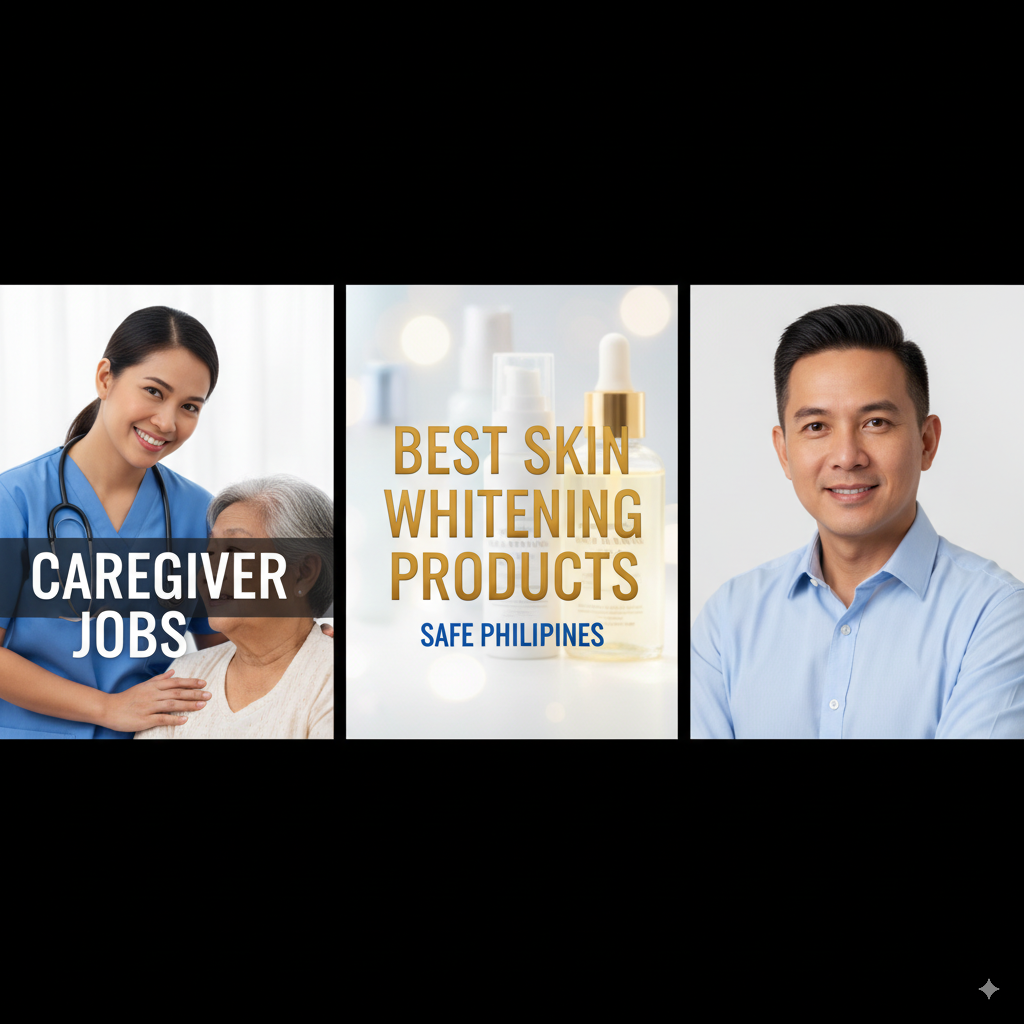Safe Brightening Guide (for Philippines shoppers)
If you’re searching for best skin whitening products safe Philippines, this guide helps you choose options that balance results with safety: what ingredients dermatologists prefer, which product types work for different concerns, and which risky practices to avoid.
This article is targeted to shoppers in the Philippines who want realistic, evidence-based options — not miracle promises. I’ll cover clinically backed actives (kojic acid, arbutin, niacinamide, vitamin C, azelaic/trans-dermal options), regulatory warnings, and how to shop from trusted sellers.
You’ll get a short list of commonly available, reputable brands sold in local retailers (Watsons, Lazada/Shopee official stores, brand sites), a step-by-step safe routine, and an FAQ that answers the usual concerns Filipinos ask about brightening products.
Why safety first?
Some whitening methods sold in the market are unproven or dangerous (e.g., unregistered injectables, creams contaminated with mercury, or high-strength unauthorised hydroquinone). The Philippine FDA and local dermatologists have repeatedly warned against unapproved injectable glutathione and unnotified cosmetic products — so always check for FDA notification and prefer dermatologist-backed products. FDA Philippines+1
Which active ingredients are considered safer and effective?
Short list (with the reasons they’re used):
-
Niacinamide (vitamin B3) — reduces pigment transfer and improves skin barrier; many studies show benefits around 2–5% concentrations. PMC+1
-
Alpha-arbutin — a gentle tyrosinase inhibitor often used at ~1–2% in serums and creams; well tolerated vs. stronger agents. Lotioncrafter+1
-
Kojic acid — widely used in Philippine products for brightening; regulatory bodies recommend low concentrations (CIR / EU guidance suggests limits ~1% for face/hand products). Patch testing is advised because some people get irritation. CIR Safety+1
-
Vitamin C (ascorbic acid and stable derivatives) — antioxidant that helps fade spots and brightens overall tone when formulated well. Clinical data supports benefits when paired with sunscreen. PMC
-
Azelaic acid / tranexamic acid — used for stubborn hyperpigmentation (melasma/post-inflammatory hyperpigmentation); often available via dermatologist prescription or OTC serums. PMC
Key non-negotiable: daily broad-spectrum sunscreen. No brightening regimen is safe or effective without sun protection; many brightening agents increase UV sensitivity. Philippine Dermatology Society+1
Ingredients & practices to avoid
-
Mercury — toxic; banned in cosmetics but still appears in illegal products; avoid any unlabeled/unregistered creams that claim “instant whitening.” U.S. Food and Drug Administration
-
Unregulated/unauthorized high-strength hydroquinone — prescription levels are controlled; avoid OTC creams that hide hydroquinone or use unsafe concentrations. PMC
-
Intravenous (IV) or intramuscular glutathione for whitening — not approved for skin whitening by the Philippine FDA; the PDS and FDA advise against injectable glutathione for cosmetic whitening. FDA Philippines+1
Quick checklist: How to pick a safe brightening product
-
Check for FDA notification (cosmetic notification number) or buy from reputable stores (Watsons, official brand stores, well-rated sellers on Shopee/Lazada). Watsons+1
-
Read the ingredient list — look for niacinamide, alpha-arbutin, kojic acid, vitamin C, azelaic acid; avoid mercury, vague “steroid” claims, or hidden hydroquinone (some lists hide it). U.S. Food and Drug Administration
-
Patch test for 48–72 hours before face use.
-
Use daily sunscreen and avoid mixing too many strong actives at once. Philippine Dermatology Society
-
If in doubt, consult a dermatologist — especially if you have melasma, severe PIH, or darker Fitzpatrick skin types where certain agents require supervision. Philippine Dermatology Society
Popular, reputable product picks (sold commonly in PH)
Below are commonly available product types/brands you can check locally. These are examples of widely available, retailer-sold, and established brands — not medical endorsements. Always read labels and check for FDA notification.
-
Kojie San (Kojic acid soap & lotions) — widely available in Watsons & official stores; popular, affordable kojic formulations. Watsons
-
Celeteque DermoScience — Brightening line — dermatologist-branded, widely distributed in PH drugstores. Good for sensitive skin options. Celeteque
-
BELO / Belo Essentials (brightening creams / kojic lines) — local brand with wide availability at mainstream retailers. Watsons+1
-
Garnier Bright Complete / Light Complete serums & lotions — vitamin C / lemon-based brightening products sold in Philippine stores. Watsons+1
(If you want, I can make a comparison table with product, active ingredient, typical price range in PH, where to buy, and short pros/cons.)
Safe sample routine (face) — simple, realistic
Morning
-
Gentle cleanser.
-
Brightening serum (niacinamide 2–5% or vitamin C derivative) — apply thin layer.
-
Moisturizer if needed.
-
Broad-spectrum sunscreen SPF 30+ (reapply every 2–3 hours outdoors). Philippine Dermatology Society
Evening
-
Cleanse.
-
Targeted treatment (alpha-arbutin or kojic serum; or azelaic acid if prescribed).
-
Moisturize.
-
Avoid mixing strong acids/retinoids & brighteners until tolerance is confirmed.
FAQs (short, SEO-friendly)
Q: Are whitening products safe for Filipinos?
A: Many topical ingredients (niacinamide, arbutin, kojic acid at low concentrations, vitamin C) are considered relatively safe when used correctly and with sun protection — but avoid unregistered products, mercury-containing creams, and injectable whitening unless supervised by a licensed physician. Check FDA notifications and consult a dermatologist for persistent pigmentation. U.S. Food and Drug Administration+1
Q: Is glutathione injection safe for skin lightening?
A: No — the Philippine FDA and local dermatologists warn that injectable glutathione for cosmetic whitening is not approved and carries risks. Choose topical, evidence-backed alternatives and ask a doctor about safe options. FDA Philippines+1
Q: How long until I see results?
A: Expect gradual improvement over weeks to months. Topical brightening takes patience (often 6–12 weeks) and requires consistent sun protection. PMC
Q: Where should I buy to avoid fakes?
A: Buy from official brand shops, Watsons/major drugstores, or verified official stores on Lazada/Shopee. Check product packaging, registration numbers, and seller ratings. Watsons+1
Final tips & next steps
-
Prefer formulations with proven actives (niacinamide, arbutin, vitamin C, azelaic/trans-examic acid) and low-risk concentrations. PMC+1
-
Avoid any product promising instant drastic whitening or products distributed outside regular retail channels without proper labelling or registration. U.S. Food and Drug Administration
Conclusion (keyword usage per your instructions)
To choose the best skin whitening products safe Philippines, prioritize FDA-notified brands, dermatologist-recommended actives, and daily sunscreen use. When looking for the best skin whitening products safe Philippines, avoid unregistered injectables and mercury-tainted creams — check FDA advisories and the Philippine Dermatological Society guidance. Finally, pick the best skin whitening products safe Philippines that list clear active ingredients (niacinamide, alpha-arbutin, kojic/vitamin C) and purchase from reputable retailers.


